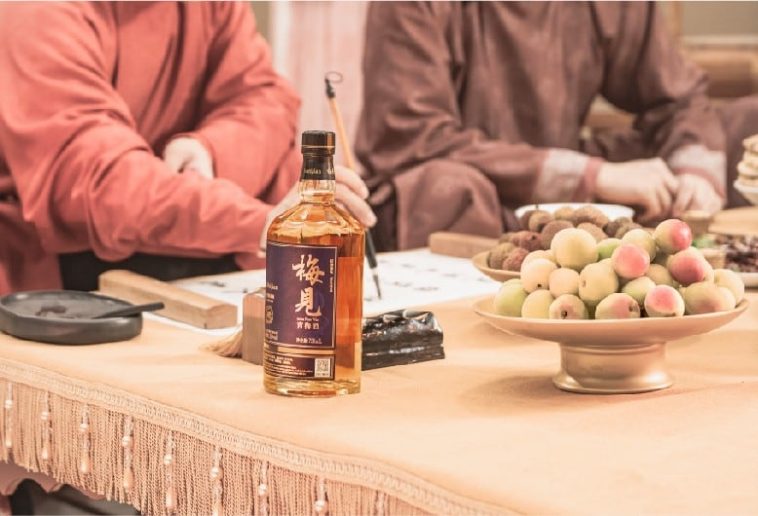Meijian plum liqueur has a heavy focus on traditional Chinese arts and crafts.
(Meijian)
China’s Meijian is looking to position plum wine as the nation’s next big alcohol export, with a focus on both local ingredients as well as arts and crafts in its packaging.Meijian claims to operate the largest plum liqueur factory in the world at around a million square feet, and still maintains traditional production methods in manufacturing its products.
“We insist in using local Chinese plums, of which we have our own four plum orchards in China, when making all of our products, as well as using ancient methods from the Tang and Song dynasty to craft these,” Meijian General Manager Anping Xu told FoodNavigator-Asia.
“The whole idea in doing this is to integrate Eastern values into the products as well as to suit Eastern consumer tastebuds.
“It is also why we only focus on making the liqueur in its original form and do not add foreign components or attempt overly novel fusions – these may be creative but can be difficult in terms of integration and suiting consumer tastes, and we need to get them to try first before we can really spread Meijian out there.”
This focus on localisation has also extended to the firm’s packaging, which is heavily influenced by local culture as well as the plum tree itself.
“Our symbol is very directly the plum blossom itself, which has been artistically rendered in an ancient Qing dynasty design in terms of the pattern,” he said.
“The bottles themselves are also designed with an ancient Chinese aesthetic, but of course these have been modernised somewhat to meet the aesthetics of younger generation consumers as well Western consumers.
“What we do try to do with each one is to seek out nearly-forgotten arts and crafts in China, and try to integrate each into the design of the bottles – these are all related to what is known locally as Qiya 七雅 or the Seven Elegances, namely books/reading, art/drawings, zither/music, chess, poetry, alcohol, and flowers (书、画、琴、棋、诗、酒、花).
“There are many of these Chinese arts that exist today but are only mastered by a few craftsmen, and we hope to integrate these in order to not only make the products special but also bring these arts into the public, and hopefully global, eye.”
From China to the worldTo Meijian, the ultimate goal is to have the same affect on the international alcohol market as western alcohols have had on the Chinese market.
“Plum wine and liqueur has some 5,000 years of history in China, but was somewhat overshadowed by grape wines which came in from the west and affected the local alcohol market,” he said.
“Today, we look to reverse this and bring plum liqueurs to be a global product instead, and for this to be another representative of Chinese alcohol in the international scene.
“China is prepared for this, with a plum liqueur national research institute that also conducts R&D on plum liqueur from other countries such as Japan and the United States, and we will continue to use this data to improve China’s plum-based alcohol products.”





GIPHY App Key not set. Please check settings